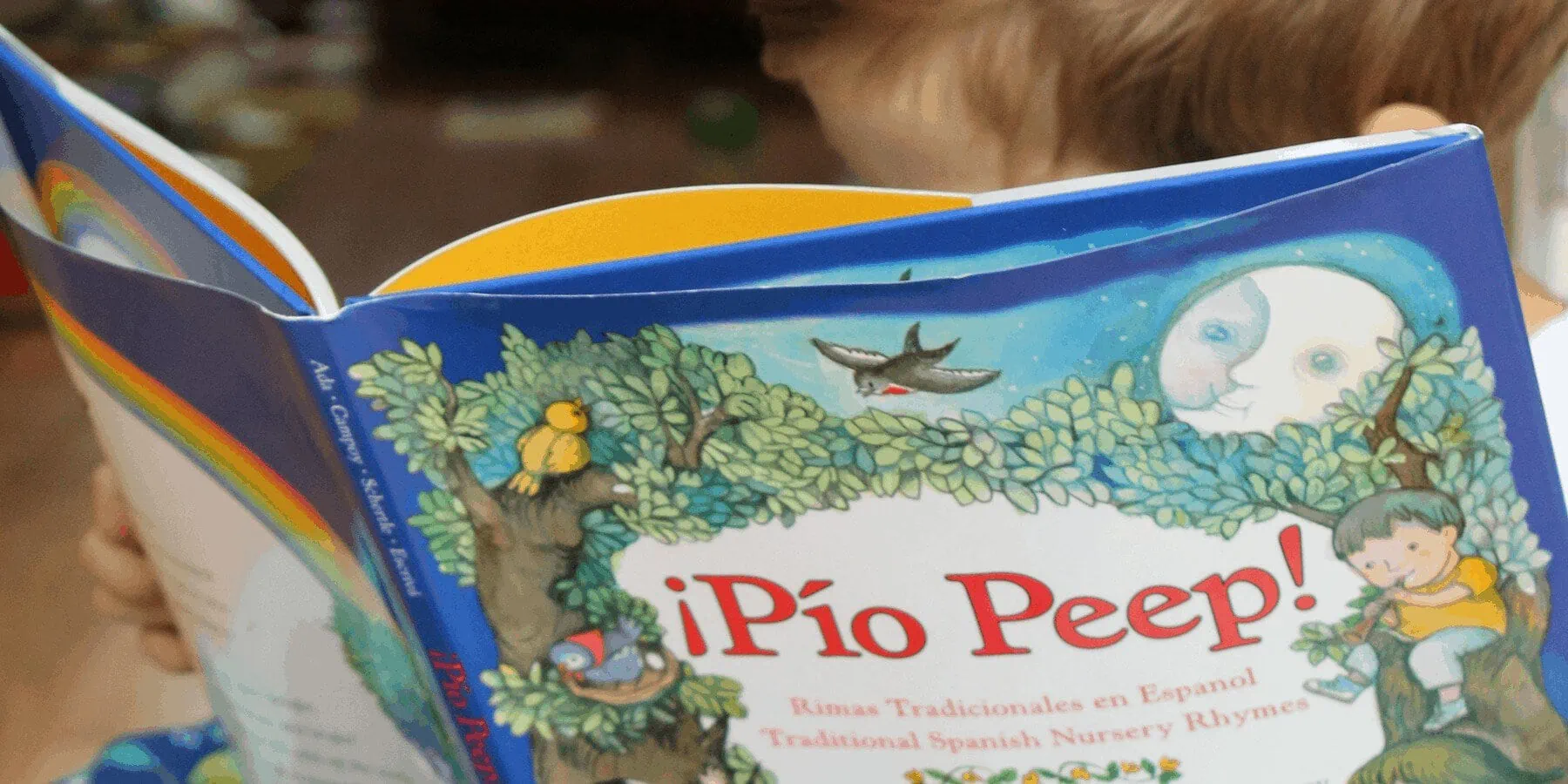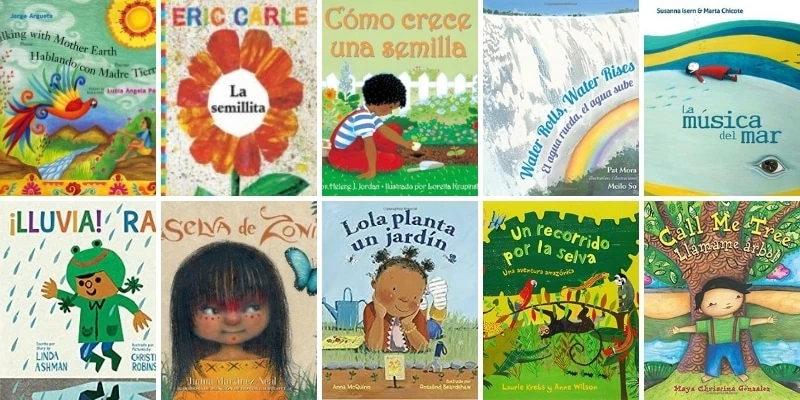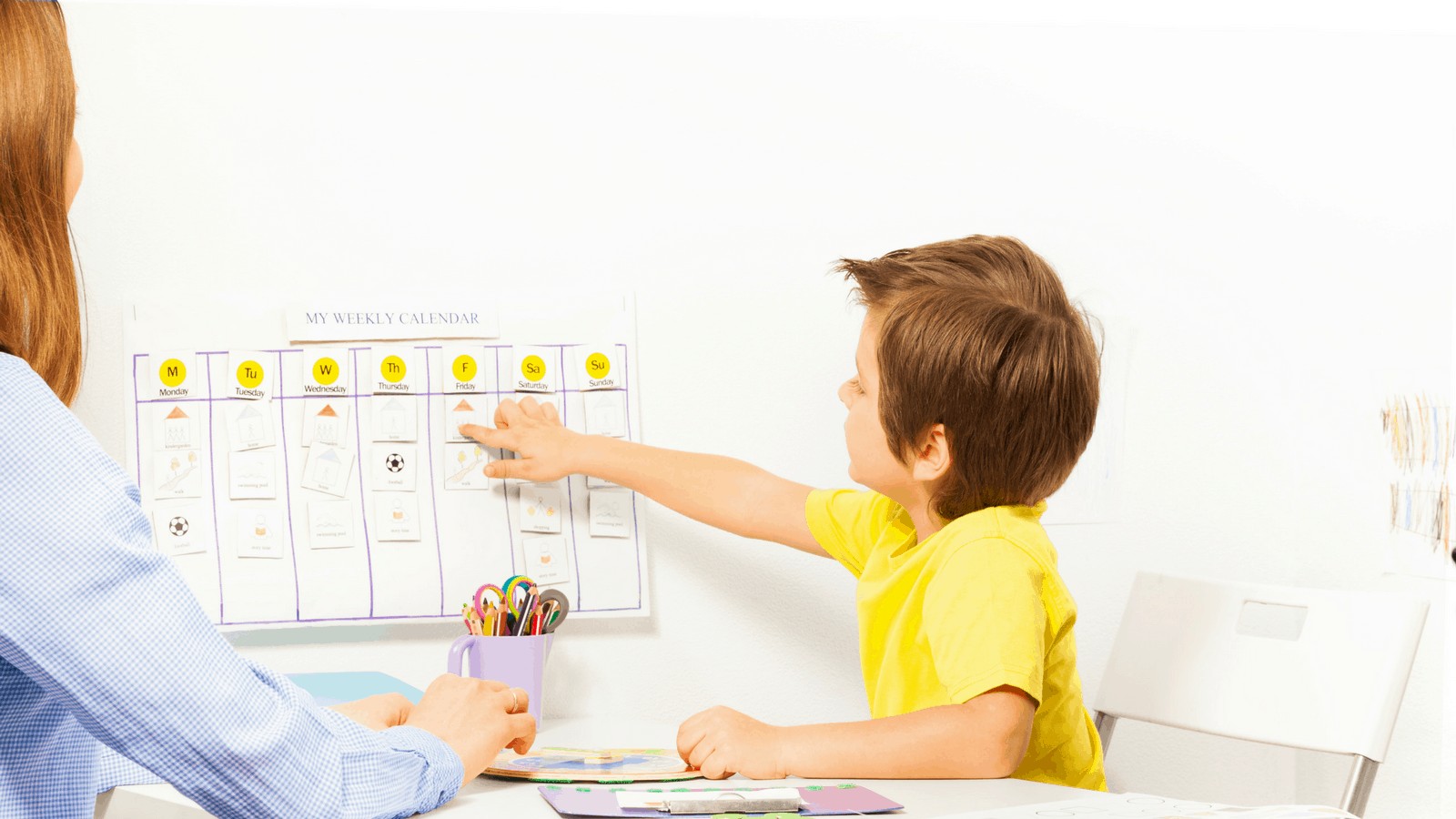Why Your Bilingual Child Needs Poetry
Inside: Why poetry is beneficial to bilingual kids.
When my son was two, it became obvious his English was more advanced than his Spanish. This wasn’t shocking (we live in the U.S.), but I wanted to figure out how to maximize our minority language. I began to watch what was happening in English.
While I teach, the kids are with my mom, a veteran homeschooling mother of over 20 years. My mom was always quoting and reading poems with us– from “This little piggy went to market” to Robert Louis Stevenson. And now Janio is getting the same dose of songs, nursery rhymes, and poems several days a week.
I realized I needed to up my game in Spanish to keep up, which meant some homework for me too. I didn’t have the repertoire of ditties to say when we were getting dressed, when the moon came out, or when we spotted a bird. So I bought Pio Peep, the classic (and beautifully illustrated) books of songs and rhymes in Spanish, and began collecting poems from Peru and Latin America here on my site. They needed to become part of me in order for them to be part of our family culture. Spanish is a beautiful, lyrical, language and perfect for rhymes.
So why does your bilingual child need poetry?
Poetry paves the way for reading, writing and speaking– for mastery of BOTH languages
Celeste Cruz of Joyous Lessons explains poetry this way:
It teaches an ear for language. It models brevity in writing. It prepares one well for more sophisticated reading. It is the mark of an educated person in many intellectual circles. It gives one a sense for diction and rhythm. It aids in understanding the many cultural references that draw on the classics. It provides a sense for metaphor in writing. It helps with public speaking. It sharpens the powers of observation. It exercises the memory. And so on.
I suspect this is why in centuries past children who spent far less time in the classroom could be articulate speakers and good writers, even without the plethora of books we have today. Their oral traditions were strong, and in many families even young children could recite vast quantities of poetry and prose.
Poetry develops a ear for good language and speech.
It teaches children how sounds work together: how to distinguish between different sounds and what sounds are similar. Poetry expands their vocabulary and embeds patterns of grammar and speech.
Poetry promotes cultural literacy.
Most bilingual children are also bi-cultural, and knowing the sayings and rhymes of both cultures allows children fully participate. Poems often include clues into a culture’s history and traditions, or insight into their way of thinking. Knowing the little rhymes everyone else grew up on helps you get jokes and literary references, too!
Poetry is beautiful.
Pragmatically, poetry is good for your child. But the actual reason we teach poetry is that it is delightful, and trains children to recognize what beautiful language is. Every child should have a repertoire of rhymes and poems they know by heart (and love) by the time they go to school. Charlotte Mason wrote,
Older (age 9?) children should practice reading aloud every day, and their readings “should include a good deal of poetry, to accustom him to the delicate rendering of shades of meaning, and especially to make him aware that words are beautiful in themselves, that they are a source of pleasure, and are worthy of our honour; and that a beautiful word deserves to be beautifully said… Quite young children are open to this sort of teaching, conveyed, not in a lesson, but by a word now and then.
For very young children like mine, I never make poetry into a lesson. It’s just a part of life: we say poems in the bathtub, when we read Mother Goose or Pío Peep, when we’re putting a band-aid on a scraped knee.
To find poems in Spanish, see my poems page or follow my Pinterest board! Let me know if you have any favorites– I am always looking for more!







